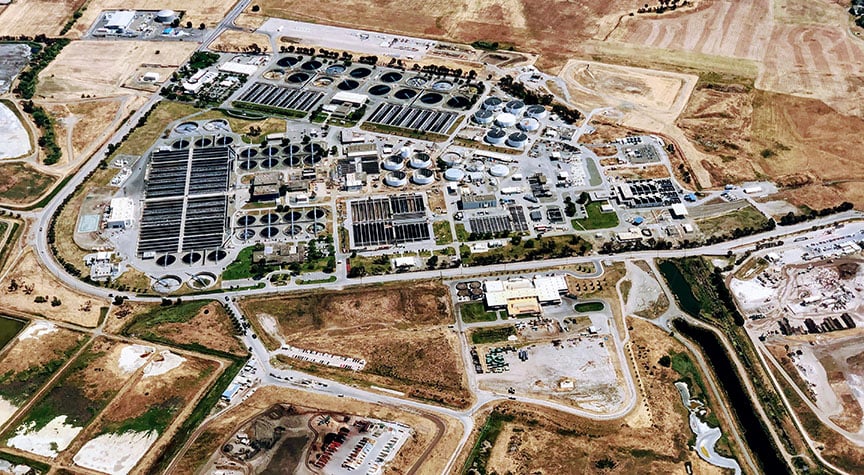Revision of PURPA Regulations in FERC Order 872 May Create New Regulatory Requirements for Behind-the-Meter Distributed Energy Resources

On July 16, 2020, the Federal Energy Regulatory Commission (FERC) issued its final rule in Order No. 872 (Order 872), overhauling the implementing regulations of the Public Utility Regulatory Policies Act of 1978 (PURPA). PURPA provides certain rights to non-utility, qualifying “small power production” and “cogeneration” facilities (each, a Qualifying Facility, or QF) to require electric utilities to purchase the output from a QF at the utility’s “avoided cost.” The overall impact of these new rules, if left unchanged, would be to reduce QF developers’ rights under PURPA. On Aug. 17, 2020, several stakeholders filed petitions for rehearing and reconsideration and for clarification, contesting nearly every major finding in Order 872.
While much attention is focused on Order 872’s changes to numerous issues affecting the determination of avoided cost, certain revisions to qualification prerequisites for small power production facilities pose new regulatory hurdles for behind-the-meter renewable distributed energy resources (DER), including for some microgrid projects. Among other things, the prior 20 megawatt (MW) rebuttable presumption threshold for nondiscriminatory access to competitive wholesale markets is now lowered to 5 MW for small power production facilities, with new procedures and standards for projects between 5 MW and 20 MW. In addition, the longstanding “one-mile rule,” which helps determine whether projects are located “at the same site,” has been modified to also include a new “ten-mile rule.” If Order 872 stands as written, these regulatory changes may work together to impede new and existing behind-the-meter DER projects from relying on an electric utility’s mandatory purchase obligation to sell excess energy to the grid.
Lower Threshold for Presumption of Nondiscriminatory Access to Competitive Markets
Since 2005, an electric utility may seek a waiver from its mandatory purchase obligation from QFs who have nondiscriminatory access to competitive wholesale markets. Prior to Order 872, FERC established a rebuttable presumption that a QF at or below 20 MW capacity did not have nondiscriminatory access. Order 872 reduces this capacity baseline to 5 MW for small power production facilities, leaving intact the 20 MW threshold for cogeneration facilities. Recognizing, however, that small power production facilities between 5 MW and 20 MW face specific barriers to participate in competitive markets, FERC added a non-exhaustive list of factors that projects falling within this capacity range may cite as demonstrating a lack of nondiscriminatory access. Among these, a project may argue that it has “a predominant purpose other than selling electricity which would warrant the small power QF being treated similarly to cogenerators (e.g., municipal solid waste facilities, biogas facilities, run of river hydro facilities, and non powered dams)….” Stakeholders have argued that behind-the-meter DER projects serving individual customers and selling excess energy to the grid satisfy this factor and thus, like cogeneration, should automatically be subject to a 20 MW threshold. This issue is currently a topic for rehearing.
Expansion of the “Same Site” Rule
Order 872 also modifies the longstanding “one-mile rule” to determine whether affiliated facilities are located “at the same site.” In general, if multiple QFs are at the same site, their individual capacities are aggregated as a single QF. Among other things, QF capacity is used to help determine: (a) QF certification (80 MW or less); (b) eligibility for certain exemptions from the Federal Power Act (FPA), the Public Utility Holding Company Act of 2005 (PUHCA), and some state laws and regulations; and (c) whether a QF falls above or below the rebuttal presumption threshold for nondiscriminatory access discussed above. Under the new rules, FERC retains the “one-mile rule” and also creates a new “ten-mile rule.” The “ten-mile rule” rebuttably presumes that affiliated small power production facilities that use the same energy resource and are located more than one but less than ten miles apart are located at “separate sites.” Facilities located ten miles apart or more are irrebuttably located at separates sites.
Order 872 establishes new procedures, factors, and evidentiary standards by which project opponents may challenge this rebuttable presumption, and allows proponents to preemptively defend against such challenges by asserting factors that affirmatively show during QF certification or recertification that the affiliated facilities are indeed separate facilities at separate sites. FERC intends that these new requirements for facilities between one and ten miles apart will apply both to new QF certifications and to legacy QFs that must recertify QF status if they make a substantive change to the existing certification. The new “ten-mile rule,” also a topic for rehearing, has the potential to aggregate new and existing projects “at the same site” that formerly fell outside the “one-mile rule.”
Next Steps
FERC rules do not permit answers to requests for rehearing, but FERC may afford parties an opportunity to file briefs or present oral arguments. FERC has 30 days to act on these requests for rehearing or clarification, or such requests will be deemed denied. If FERC requires longer than 30 days to consider the requests, it may grant the requests for the limited purpose of further consideration, in order to address all matters in a future order.
In This Article
You May Also Like
America’s AI Action Plan: Key Legal Takeaways for Businesses and Stakeholders Indiana Enacts New Laws Supporting SMR Manufacturing, Utility SMR Development, and New Generation Resources to Support Large Load Economic Development